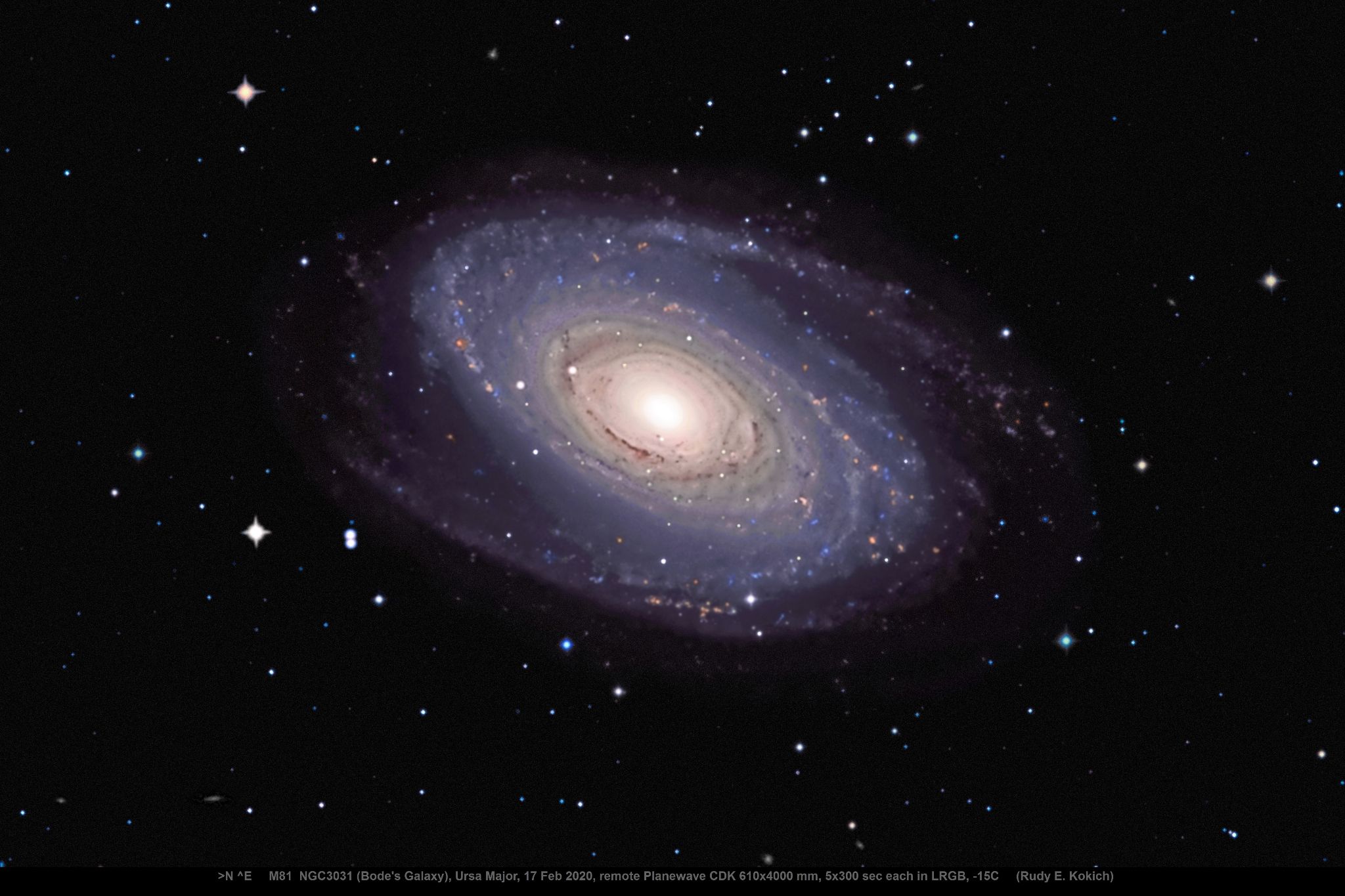EarthSky Community Photos
Submit your photo here. Comment or upvote on photo pages. Search via photographers' names. More improvements coming! To help, please donate.

New Mexico
10:00 pm
Remote controlled Planewave CDK telescope, 610 x 4000 mm
The image is a stack of 5 x 300 sec exposures for each LRGB filter, processed with DSS, XnView, StarNet++, and StarTools.
Messier 81 M81 NGC 3031, (Bode's G.) Ursa Major, LRGB, 24'' CDK
This large, bright galaxy was discovered by Bode on New Year's Eve 1774, then documented in 1779 by Mechain and Messier, who included it in his catalog as M81. The galaxy shows a prominent spiral structure, and is extensively studied at infrared wavelengths because of an active central supermassive black hole of 70 million solar masses, and because of rich star-forming regions in the spiral arms. The red regions in the spiral arms are stellar nurseries: large clouds of hydrogen gas incited to fluoresce by the ultraviolet energy absorbed from nearby stars. The blue floccules are OB Associations, immense clusters of large new stars of the very hot O and B spectral class, which have a spectacular but brief existence of only several million years. When such stars end their lives as supernovae, they enrich their galaxy with heavier elements and molecules essential for the formation of the next generation of stars, rocky planets, and of life itself.
M81 is 27 x 14 arcmin in apparent size, approximately 7 in apparent magnitude, and lies at a distance of about 12 million LY. It is estimated to be 90,000 LY in diameter, and to contain 250 billion stars. The galaxy is somewhat smaller, but similar in structure to the Milky Way.








